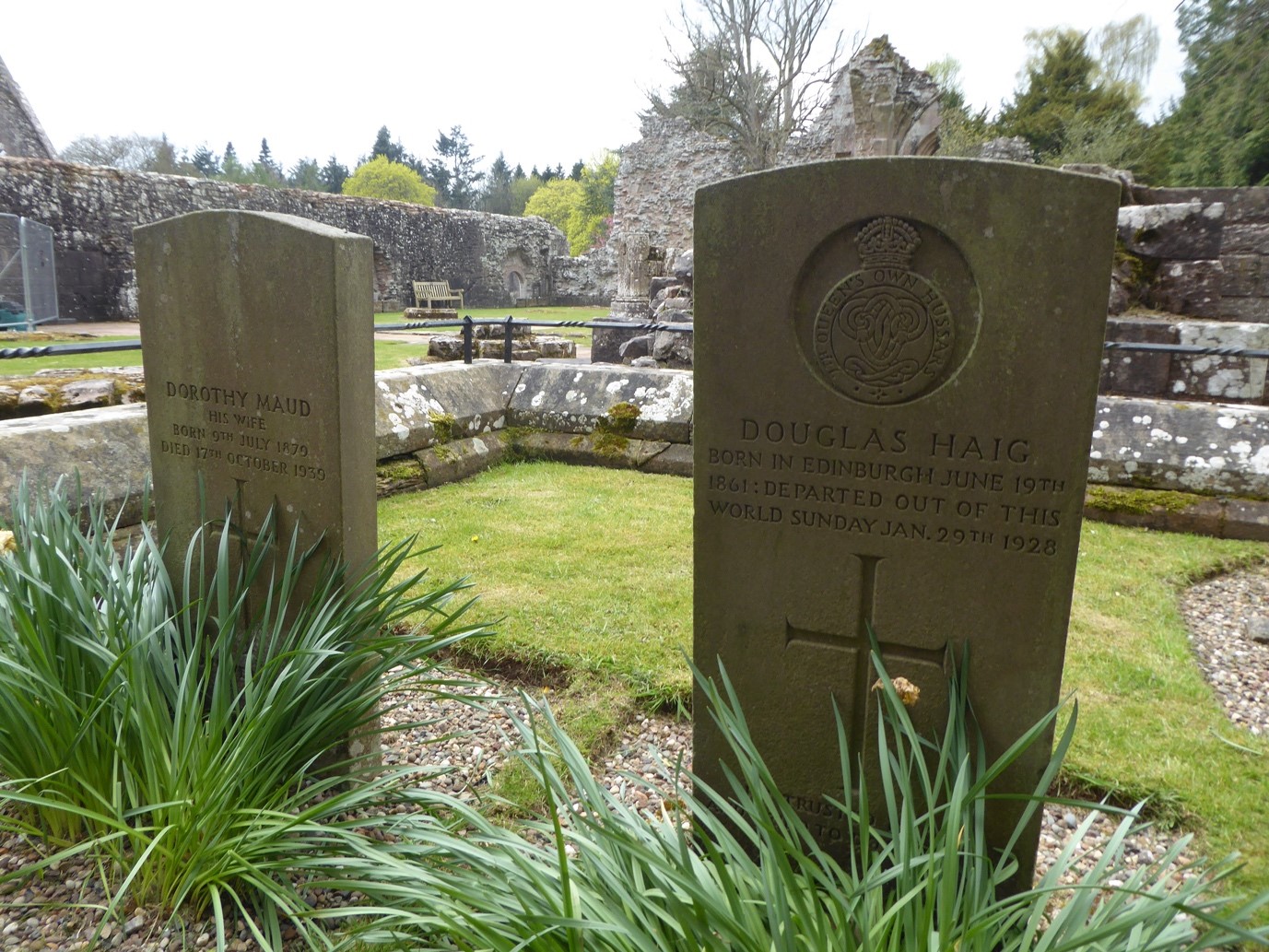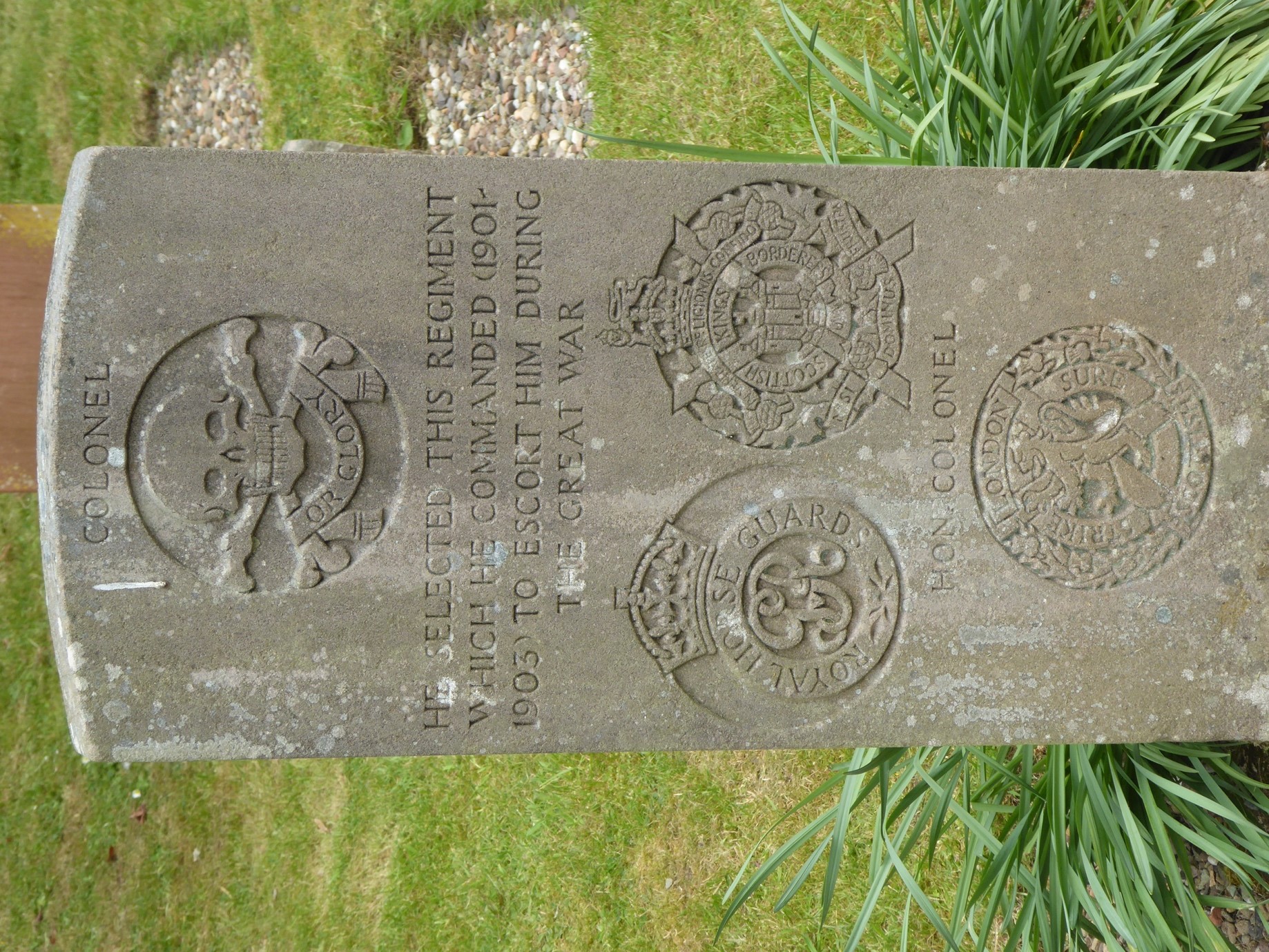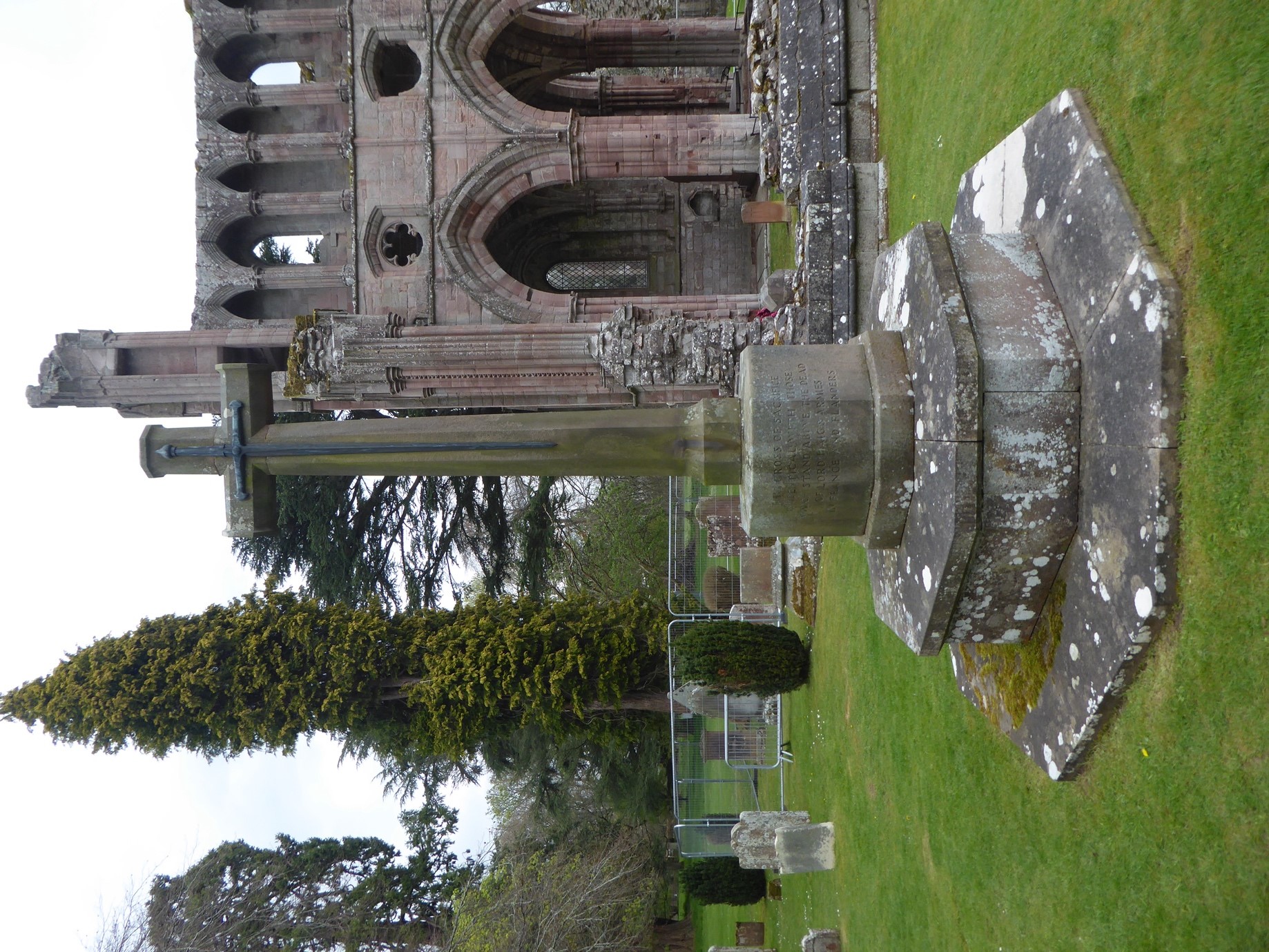Earl Haig and his wife, Dorothy Maud, lie side by side in a truly wonderful setting within the ruins of Dryburgh Abbey in the Scottish Borders. The other famous burial at the Abbey is Sir Walter Scott, who is laid to rest in a large marble sarcophagus; the contrast between these graves is remarkable.

The Haigs’ stones are of the style used by the CWGC. Inscribed is the name Douglas Haig, with no military rank or acknowledgement of his Earldom. Both birthdates and date of death are recorded, and no other postscripts or sentiments. The Queens Hussars emblem, Haig’s first regiment, is engraved above his name. Dorothy’s stone maintains the frugal narrative and states simply “His wife”.

On the rear side of Douglas Haig’s stone are the emblems of the regiments he was Colonel in Chief of, 17/21st Lancers, Royal Horse Guard, The London Scottish and the Kings Own Scottish Borders. Behind the headstones away from the graves is a Cross of Sacrifice, erected by the cavalry regiments he was Colonel in Chief of. Poignantly, the inscription on the Cross reminds all of Haig’s revered role in the Great War and the esteem held by the troops who served under him –
“This Cross of Sacrifice is identical with those which stand above the dead of Lord Haig’s armies in France and Flanders”

Haig was given a State funeral and a lying in state in Edinburgh before his interment. Heads of state and royalty paid their respects . The visit to see Field Marshall Haig’s resting place in its idyllic setting makes me suspect he would not have liked the fuss and, being a religious man, settled for piety once he met his maker.
